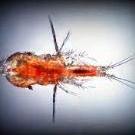Octopus hatchlings at the Steinhart Aquarium
-
Topics
-
Latest Update
-
-
0
WTS - Grandis paly
Both green and cinnamon for sale. Opens approx 3cm diameter. 3polyps for $20 Can nego if purchase more. Collection amk ave 4 -
246
WTS live rotifers, tigger pods, phyto
ups. all avail, tigger pods, rotifers , phyto tele me at littlefishaqua serious enquiry only pls dont hi me, and disappeared for hours and days. dont waste time loc, tamp/hougang $50 worth of purchase foc delivery -
0
Wts cuty tame clown triggerfish
Hand feeding tame beautiful fish non aggressive easy to get along with others fish ( not reefsafe ) healthy and parasite free med size around 5" feeding frozen prawns and clams also small whole fish + dried seaweed slow grower cuty fish with me around 2 to 3 months.... Self collect at depot road $130 20250226_085257.mp4 -
8
WTS: JECOD DMP-40M Wavemaker x 2
Bumping Sent from my 2201123G using Tapatalk
-








Recommended Posts
Join the conversation
You can post now and register later. If you have an account, sign in now to post with your account.